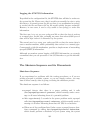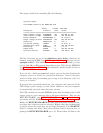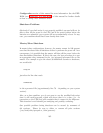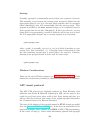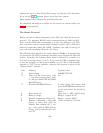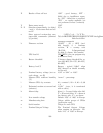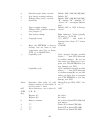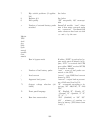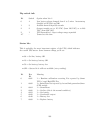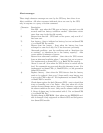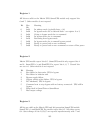diagram are used to keep PowerChute happy by allowing cable detection.
If you use the NUT apcsmart driver, those pins don’t matter.
Many thanks to Steve Draper for providing this scan.
For additional information on cables, see the section on custom cables (see
Cables) in this manual.
The Smart Protocol
Despite the lack of official information from APC, this table has been con-
structed. It’s standard RS-232 serial communications at 2400 bps/8N1.
Don’t rush the UPS while transmitting or it may stop talking to you. This
isn’t a problem with the normal single character queries, but it really does
matter for multi-char things like “@000”. Sprinkle a few calls to usleep() in
your code and everything will work a lot better.
The following table describes the single character Code or command that
you can send to the UPS, its meaning, and what sort of response the UPS will
provide. Typically, the response shown below is followed by a newline (\n
in C) and a carriage return (\r in C). If you send the UPS a command that
it does not recognize or that is not available on your UPS, it will normally
respond by “NA” for not available, otherwise the response is given in the
“Typical results” column. >
Code Meaning Typical results
ˆA Model string SMART-UPS 700
ˆN Turn on UPS (send twice, with
> 1.5s delay between chars) Only
on 3rd gen SmartUPS and Black
Back-UPS Pros
n/a
ˆZ Permitted EEPROM Values A large string (254 chars) that
gives the EEPROM permitted val-
ues for your model. For details see
below.
A Front panel test Light show + “OK” (and 2s beep)
B Battery voltage Ranges - typical “27.87”
C Internal temperature (degrees C) Ranges - typical “036.0”
D Runtime calibration - runs until
battery is below 25% (35% for
Matrix) This updates the ’j’ val-
ues - only works at 100% battery
charge. Can be aborted with a sec-
ond “D”
! when on battery, $ on line
188




